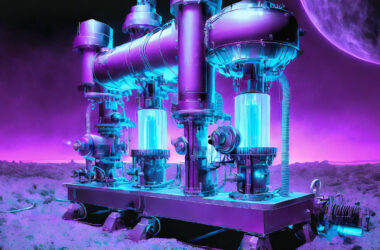Houston-based company Intuitive Machines is set to pioneer the landscape of private lunar exploration. The firm recently announced that the inaugural launch of its Nova-C lunar lander has been pushed back two months, with liftoff now targeted for January 12-23, 2024.

The lander will ride into space atop a SpaceX Falcon 9 rocket, taking off from Cape Canaveral Space Force Station in Florida. If successful, Nova-C will make history as one of the first private moon landing missions.
Intuitive Machines Lunar Lander
Intuitive Machines has developed the Nova-C lander under NASA’s Commercial Lunar Payload Services (CLPS) program. CLPS aims to spur the creation of robotic lunar delivery services by private companies. These commercial landers will carry scientific instruments and technology experiments to help lay the groundwork for NASA’s future Artemis missions that will return humans to the moon.
The Nova-C lander was initially slated to launch in a November 16-21 window. However, scheduling challenges with the launch vehicle and launchpad ultimately forced a delay to early 2024. Intuitive Machines stated that such timeline changes are to be expected when venturing into new frontiers like private lunar landers. The company expressed optimism about overcoming these hurdles and achieving the monumental accomplishment of reaching the moon’s surface.
When it does lift off, Nova-C will launch atop a Falcon 9 rocket from the historic Launch Complex 39A at Kennedy Space Center. This is where Apollo 11 and many other human spaceflight missions began their journeys. The lander will deploy from the rocket after achieving a translunar injection burn that sends it on a path to the moon.
Approximately 4-5 days after liftoff, Nova-C will attempt a precise rocket-powered landing near the rim of the Malapert crater in the lunar south polar region.
Nova-C is designed as a compact, sturdy spacecraft that is only about 13 feet tall and 5 feet wide. It utilizes 6 landing legs and weighs around 2,000 kg fully fueled. The lander can deliver roughly 100 kg of instruments and experiments to the lunar surface across two external payload attachments.
For its maiden voyage, Nova-C will host 5 NASA science and technology demonstration payloads:
- Laser Retroreflector Array (LRA) – Supports lunar positioning and mapping
- Navigation Doppler Lidar – Provides velocity and ranging data during descent
- Lunar Node 1 Navigation Tech Demo – Tests spacecraft position and timing systems
- Stereo Cameras for Lunar Studies – Captures video and images during landing
- Radio Observation of photoelectron sheath – Measures lunar ionosphere
There are also 4 commercial payloads on board, including a time capsule of photos, children’s drawings, and an orbital reflector object.
The Nova-C lander aligns with the objectives of NASA’s Artemis program to return astronauts to the lunar surface. Intuitive Machines is flying this CLPS pathfinder mission to scout out the south pole landing environment before the Artemis 3 crewed flight slated for 2025. Nova-C will assess landing hazards like rocks and craters and demonstrate precision landing techniques. The data collected will help NASA select the optimal Artemis 3 touchdown site near lunar resources like water ice.
Intuitive Machines’ lunar flight is part of an unofficial race between companies to complete the first private soft landing on the moon. Another competitor, Astrobotic, has its Peregrine lander slated to launch on a United Launch Alliance Vulcan Centaur rocket from Cape Canaveral in late December 2023. Additional American firms like Blue Origin and Redwire are developing lunar landers as well, with test missions expected through 2024.
Achieving a safe Nova-C landing would be a historic milestone for Intuitive Machines and the nascent private lunar industry. It would also bode well for NASA’s reliance on commercial partners to enable its Artemis objectives. While launch delays are not unexpected, they underscore the challenging complexity of lunar missions. If Intuitive Machines can overcome these hurdles, it would further highlight the burgeoning capabilities of private space companies.
The road to the moon’s south pole includes many steps, both big and small. While not without setbacks, Intuitive Machines’ Nova-C lander represents a pioneering leap forward into expanded commercial activity beyond Earth orbit. The mission’s success would stand as a symbol of American engineering innovation and serve as a stepping stone to achieving the next era of lunar exploration.
- Intuitive Machines’ Nova-C lunar lander launch delayed from Nov to Jan 12-23 window
- Launching on SpaceX Falcon 9 from Florida to land near moon’s south pole
- Nova-C is part of NASA’s CLPS program and pathfinder for Artemis
- Carrying NASA and commercial payloads to scout landing site for future crewed missions
- Will be historic milestone if Nova-C achieves first private soft landing on moon







